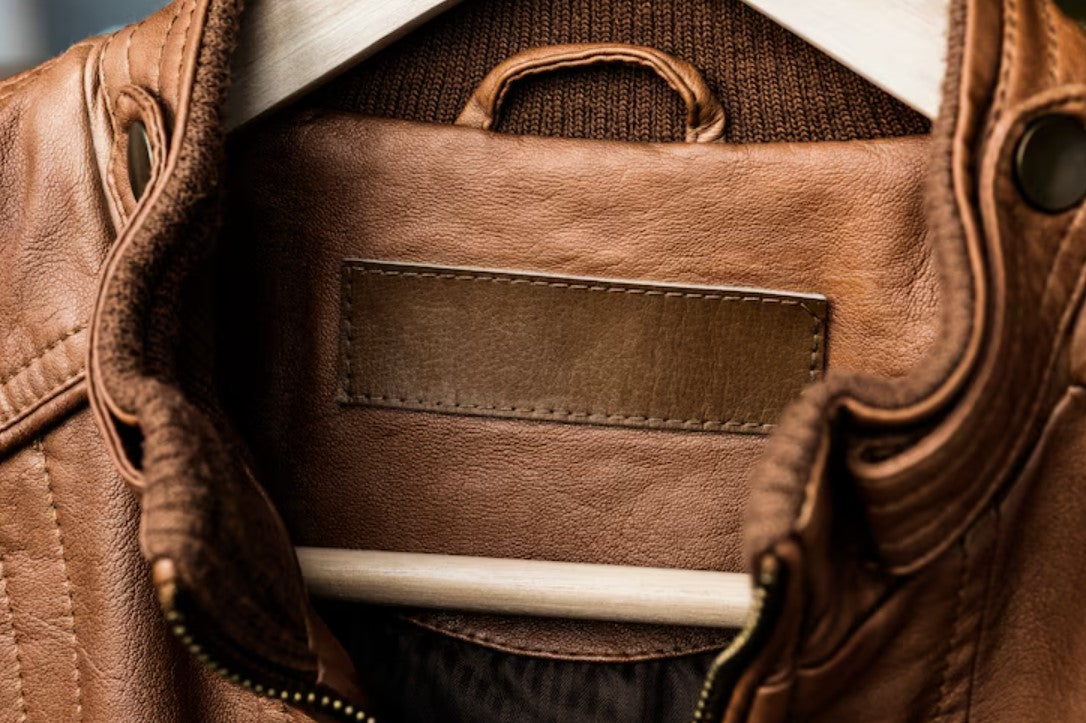
How to Remove Mould from Leather Jacket in USA in 2025: A Practical & Stylish Guide
Leather jackets have long been a wardrobe staple in the United States. Whether you're cruising down Route 66, hitting a jazz bar in New Orleans, or simply braving a New York winter, a leather jacket offers timeless style and durability. But even the most rugged jacket isn't immune to the quiet, insidious invasion of mould.
In 2025, as many Americans embrace eco-friendly living and sustainable fashion, vintage and long-lasting wardrobe pieces like leather jackets are more popular than ever. Unfortunately, improper storage in humid or damp conditions can result in that dreaded green, white, or black fuzz: mould.
The good news? You can bring your beloved leather jacket back to life—without professional intervention. Here’s your complete 2025 guide to removing mould from a leather jacket in the USA, keeping both fashion and fabric integrity in check. Before this, explore best leather jackets in USA here.
Why Mould Forms on Leather Jackets
Leather is organic. It “breathes,” absorbs moisture, and, when kept in humid environments like basements, attics, or packed closets, can quickly become a breeding ground for mould spores. This becomes especially problematic in regions with high humidity—think Florida, Louisiana, or the Pacific Northwest.
Other common culprits in 2025:
- Improper storage after a rain-soaked day
- Packing jackets tightly with no ventilation
- Storing leather near a bathroom, laundry room, or poorly insulated window
Warning Signs: Spotting Mould Early
Before you panic, know the signs of mould:
- Musty, earthy odor
- Green, white, grey, or black fuzzy patches
- Small dots or stains that spread over time
- Flaking or sticky texture
The sooner you spot it, the easier the restoration. Ignoring mould risks permanent damage and health issues, especially for those with allergies.
Before You Begin: What You’ll Need in 2025
Thanks to innovation and eco-conscious trends in 2025, you don’t need harsh chemicals. Here’s a modern leather-safe mould removal toolkit:
Essentials:
- Microfiber cloths
- Soft-bristle brush or old toothbrush
- Distilled white vinegar (or rubbing alcohol)
- Mild leather cleaner (plant-based, USA-made brands like Otter Wax or Chamberlain’s Leather Milk)
- Spray bottle
- Leather conditioner (vegan-friendly options are now widely available)
- Disposable gloves
- Face mask (mould spores are not your friends!)
Optional but helpful:
- Portable UV-C sanitizing wand
- Dehumidifier or moisture-absorbing packets (like silica gel)
Step-by-Step Guide: Removing Mould Safely
1. Take It Outside
Always work in a well-ventilated area. Outdoors is ideal, especially if it’s sunny. Sunlight naturally helps kill mould and deodorizes leather.
Shake off the jacket gently to dislodge loose spores.
2. Gently Brush the Surface
Take a soft-bristle brush or a clean cloth and carefully sweep away the mould from the leather’s surface. This helps eliminate most of the visible spores. Be gentle—excessive pressure or scrubbing can damage the leather and lead to cracking.
After use, either dispose of the brush or cloth, or thoroughly wash it with hot water and detergent to prevent the spread of spores.
3. Mix Your Natural Cleaner
In your spray bottle, combine:
-
Equal parts distilled white vinegar and water
(or) - One part rubbing alcohol to one part water
These solutions are naturally antifungal and safe for leather when used properly.
4. Test a Hidden Spot First
Before applying the solution to the whole jacket, test it on a concealed spot—such as the inner seam—to ensure it doesn’t damage or discolor the leather. Wait a few minutes. If the leather doesn't discolor or dry out, proceed.
5. Clean the Affected Area
Spray your mixture on a clean microfiber cloth (never directly on leather). Gently wipe down the mouldy areas, working in small circles. Avoid soaking the leather.
For deep-seated mould, dab a little more solution, let it sit for 30 seconds, then wipe away.
Repeat if necessary.
6. Air Dry Naturally
Hang the jacket on a padded hanger in indirect sunlight or a breezy room. Never use a hairdryer or put it in direct heat—this can warp or crack leather.
Leave it to dry for at least 24 hours.
7. Condition the Leather
Once the jacket is dry and mould-free, apply a leather conditioner. In 2025, many U.S. brands offer eco-conscious options with nourishing plant oils. This step restores lost moisture and suppleness to the leather.
Rub in the conditioner with a clean cloth in circular motions. Let it absorb overnight.
Advanced Tips: Preventing Mould Regrowth in 2025
-
Use Tech-Savvy Storage
In 2025, smart wardrobes equipped with built-in dehumidifiers or ventilation systems are becoming increasingly popular in American households. If you can’t invest in one, simple fixes like silica gel packets or a moisture-absorbing closet block go a long way. -
Monthly Inspections
If you live in humid states like Mississippi or Georgia, inspect your leather monthly. Prevention is easier (and cheaper) than repair. -
Wear It More Often
Leather loves to be worn! Jackets that sit idle too long become stale. The warmth from your body helps maintain flexibility and reduces mould risk. -
UV-C Sanitizers
These pocket-size tools have become popular in 2025 for killing germs on everyday items. A few passes with a UV-C wand can kill lingering spores without chemicals. -
Use Leather-Safe Mould Protectants
Brands now offer protectant sprays designed to repel mould and moisture. Apply one every season, especially if your jacket sees little use.
When to Seek Professional Help
If:
- Mould has deeply penetrated seams or lining
- Leather is cracking or smells unbearable
- You own a high-end designer piece
…take it to a specialist. Many U.S. leather cleaning services now offer pickup/drop-off or mail-in options. They use enzyme-based treatments and pH-balanced conditioners that restore even heavily damaged pieces.
Eco-Friendly Bonus: Don’t Toss, Upcycle
If a jacket is beyond saving, consider upcycling it. In 2025, sustainable fashion is thriving, and repurposing worn leather into bags, belts, or even wall art is a creative and environmentally conscious choice.
Final Thoughts
In 2025, owning and maintaining a leather jacket in the USA means blending timeless fashion with modern responsibility. Removing mould may seem daunting, but with patience, natural cleaners, and a little care, your jacket can return to its former glory.
Remember: Leather is a legacy material. Treat it well, and it will serve you for decades—free of mould, full of memories, and always in style.


